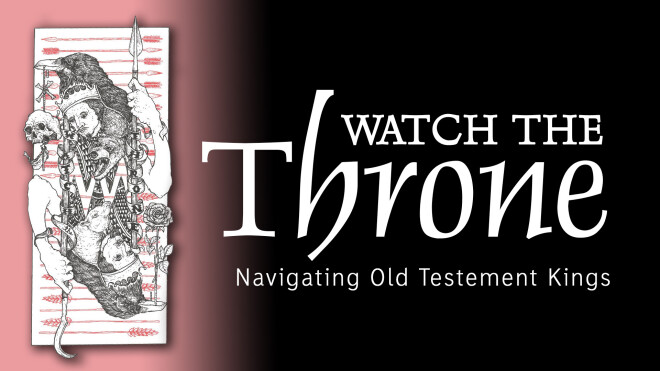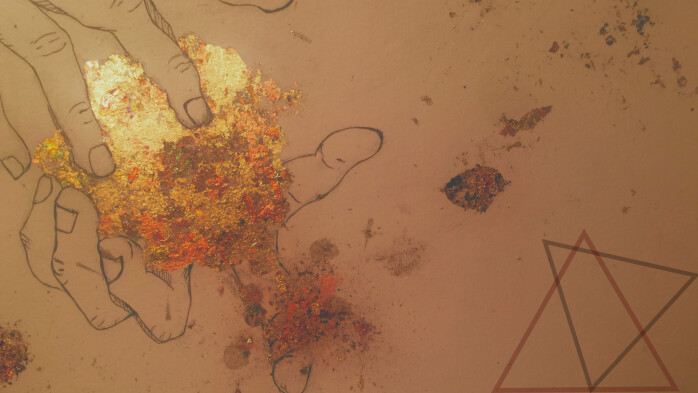Responding To Creation: A Conversation With Scott Aasman

Because we believe that art has value in the life of the church, the College + Career ministry works with artists from a variety of mediums to illuminate the biblical themes of our teaching series. Scott Aasman produced the images you've been seeing during our current study of 1 Kings. He was kind enough to take some time to answer a few questions about his interest in the arts, and the way that they help us to explore creation.
Hey Scott, for those who don’t know you, tell us little bit about yourself
I’m Scott Aasman, I am an artist/illustrator/carpenter and I live in Hamilton, Ontario, Canada with my wife and my son.
How did you come to be interested in the arts?
I always loved drawing and it was something that came naturally to me. I think it really took root though when I was 5 and diagnosed with a hip disorder called Legg-Perthes disease, it required me to be in bedrest for 6 weeks and then, for about a year and a half afterwards, leg braces (think Forest Gump with 2 ft metal bar running from knee to knee). I was still able to play with my friends, but it did slow me down a bit, particularly in the winter where bundling on snow pants and boots were pretty much impossible. So while my classmates went out for recess, I stayed inside and drew pictures—I didn’t feel sorry for myself because this was something I really enjoyed doing. Eventually, my hips did heal but I continued to draw, and that just stuck with me through high school, into university and to today.
My interest in art came naturally, but it seems that through my journey there came people alongside me—teachers, relatives, church members who would encourage me and push me a step further in my development. Primarily I did art because it was something I was good at, but these people showed me, as a human/Christian, that art was something I should do and has value.
How do you see the Christian faith influencing and informing your work as an artist?
In university I did a double major in Theology and Fine Art. A big breakthrough was when I came across Janet Martin Soskice’s Metaphor and Religious Language which talked about how there are times when we can say very little about things if we don’t use metaphor and how metaphor can add to meaning. So I started employing Art to help me synthesize the abstract thoughts and ideas I was coming across in my theology into a way I could understand them and communicate them, and helped me develop a visual language. Still today, I actively take a sketchbook to church to help me take in, digest and personalize what I am hearing.
Moreover, art helps me as a maker and appreciator encounter Creation in all its forms and ponder its mysteries, weep at its brokenness, laugh at its quirks and delight in its beauty. Art helps me, as a created being, center myself and revel in creation.
So what I guess what I am getting at is that my Christian faith informs my art in the way that I primarily work with Christian imagery and themes, but my Christian faith also gives me a framework that tells me that art is a human response to Creation and that makes it valuable and good.
The image you produced for the 1 Kings series is really striking. What are some of the themes and ideas you were looking to communicate?
I was struck by Israel's constant cycle of shalom bringing and breaking kings. I was reminded of Deuteronomy 28 which talks about the blessings for obedience and curses for disobedience and thought how a King's role plays into that.
I used the layout of a playing card, and contrasted a 'good king' and 'bad king'. The bad king wears a snarling, aggressive dog pelt, wields a spear as arrows surround him, the good king carries a sacrificial lamb, wields a pruning hook and is surrounded by the bounty of the land (ok...maybe a few sheaves of wheat but let's not split hairs here). In my work ravens often reference prophets (they're loud, not necessarily always a welcomed presence and hard to ignore). The raven's bear 'gifts', referencing 1 Kings 17.
Finally, the clothes are referencing the shalom bringing/breaking--either ushering in the kingdom of heaven or tearing it apart. Two simplified crowns meet (or separate?).
How do you think the church could do a better job of caring for artists as they pursue their vocation?
Simply put: make beautiful spaces and sing beautiful songs. Find artists, writers, poets, and playwrights who can add to the mystery and beauty of the Gospel, who can utilize metaphor to help others understand that biggest Truth. I think that often when Protestants think of the ‘Word’ as ‘words’, when really it’s living and breathing and speaking in so many ways to so many people—and we need to encourage that.
Where can people go to see more of your work and stay informed with what you’re up to?
I’ve never been great with the website/blog upkeep so I keep things simple, Instagram (@sanillustration) and Twitter (@ScottAasman) are my chief ways of connecting and sharing, although if you follow me on Twitter, beware that I’ll probably bore you to death with my Toronto Maple Leaf hot takes.




